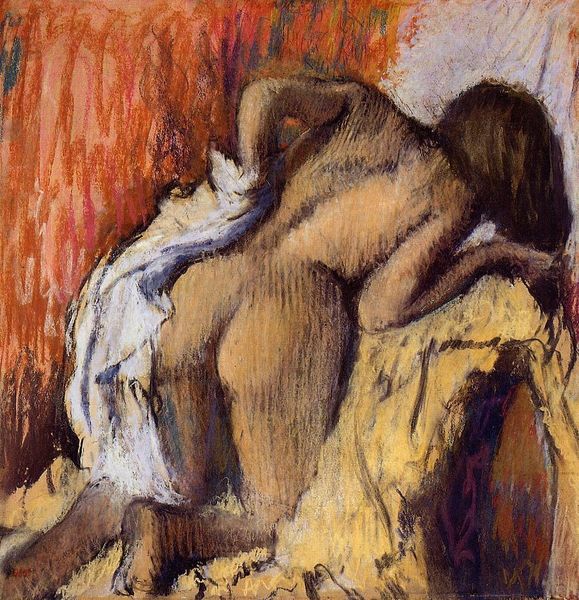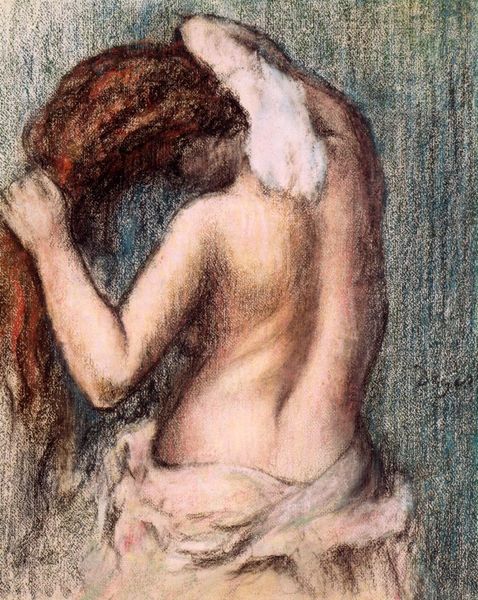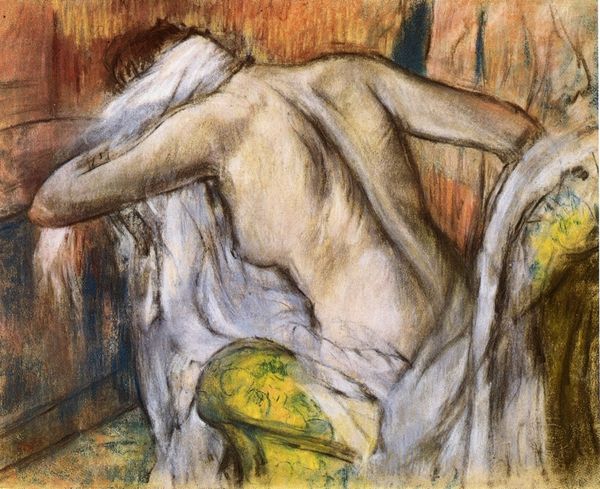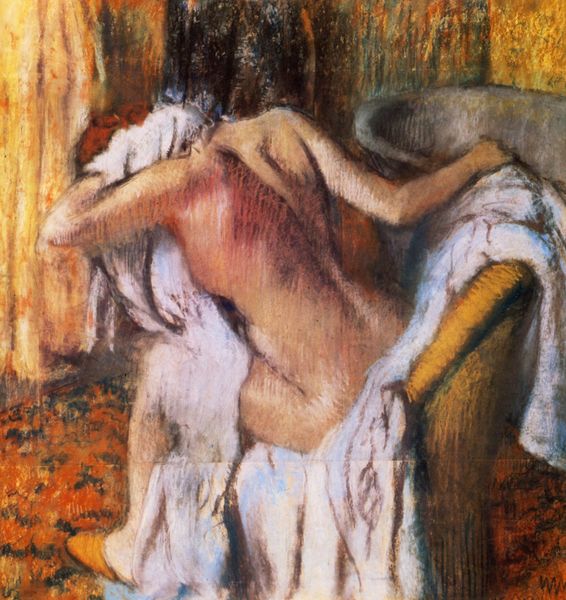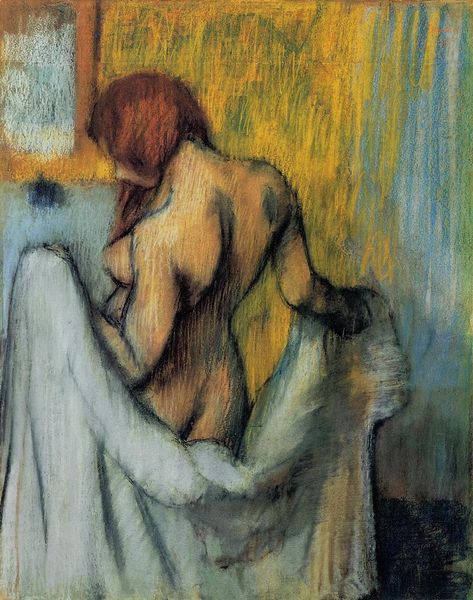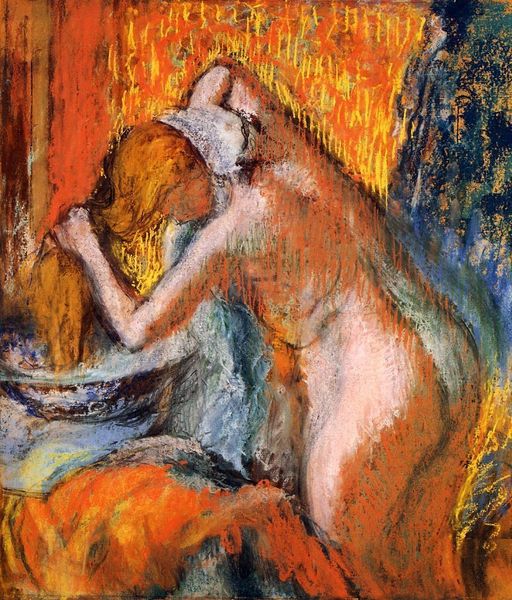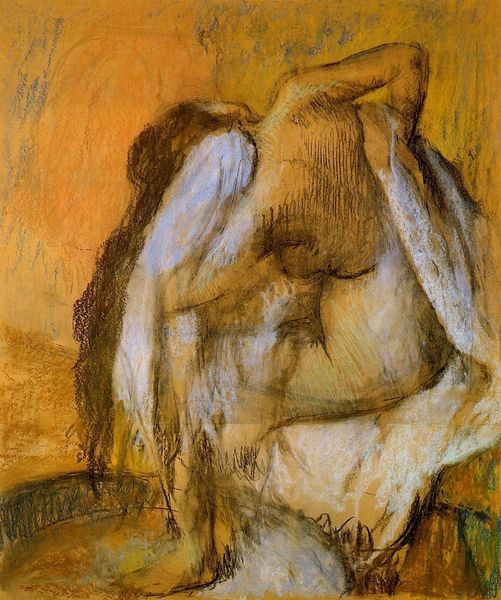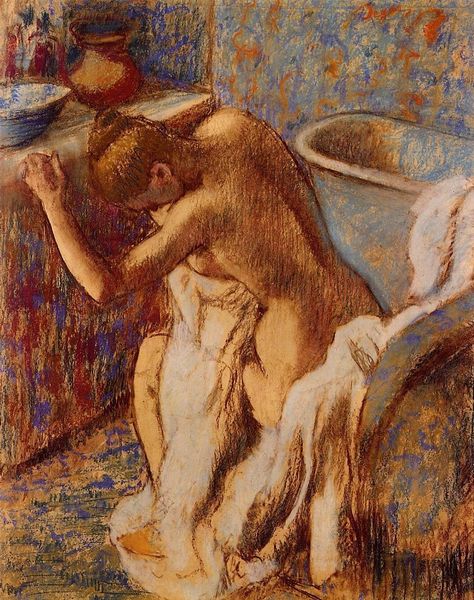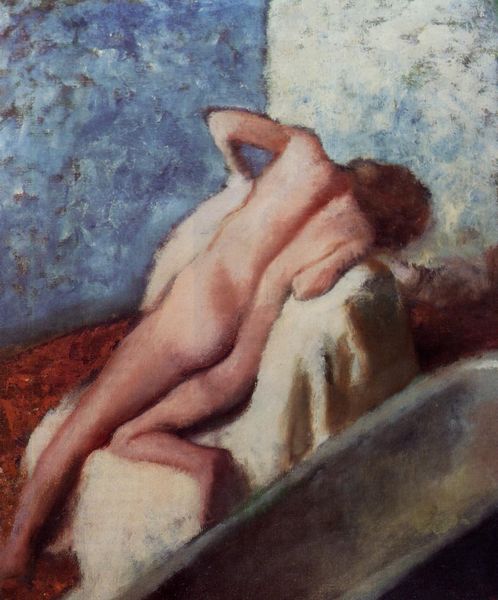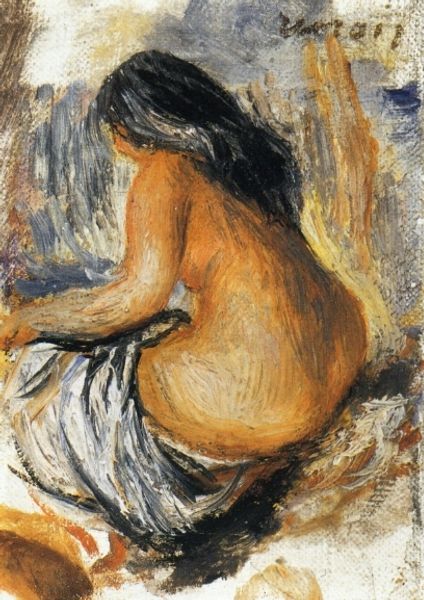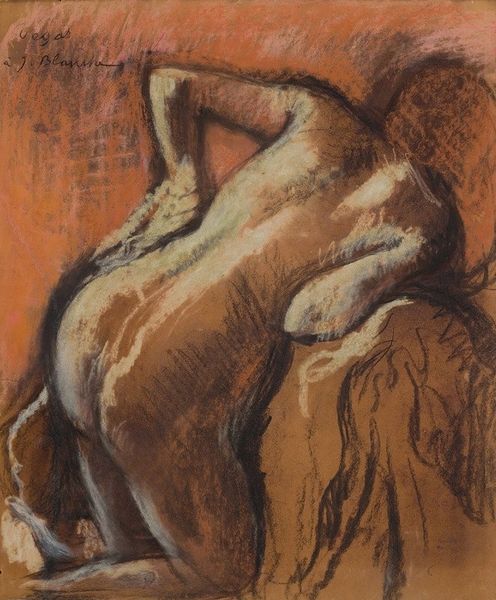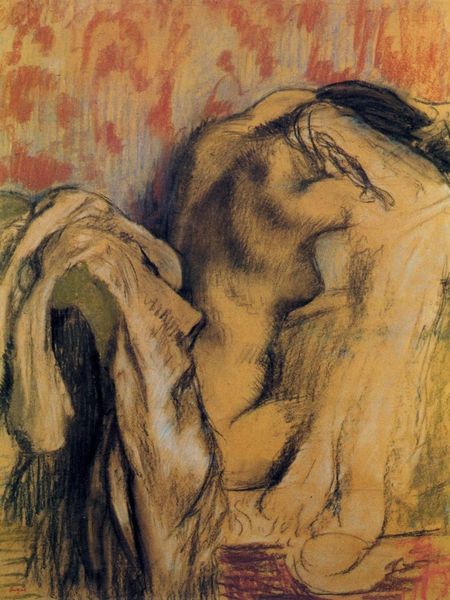
Copyright: Public domain
Curator: Edgar Degas created "After the Bath" around 1910, using pastel. It's part of his series focusing on women in private moments. The piece immediately strikes me with its intimate portrayal and earthy tones. Editor: The initial mood I get is one of introspection and vulnerability. It's a glimpse into a very private, almost stolen moment, isn’t it? I am drawn to the woman's bent posture, as if trying to hide herself. Curator: Exactly. Degas was fascinated by capturing fleeting, unposed moments. He was inspired by Japanese prints which informed his non-traditional framing and perspective. He often focused on women working or, as in this case, attending to personal hygiene. This emphasis was driven by late 19th century social conventions. What was considered acceptable subject matter and perspective in art became part of public discourse during his lifetime. Editor: That's so interesting about the influence of Japanese prints! Considering the historical context, though, there's also a palpable sense of voyeurism. Was Degas exploring female subjectivity or just furthering the objectification of women? This image becomes part of a broader visual culture shaping how women were viewed, and perhaps viewed themselves, within patriarchal structures. Curator: That’s a critical point. Degas's work exists in a complex space. He aimed to depict modern life as it was lived but of course, his view was shaped by the male gaze of the period. These pictures weren't commissioned like some other art of the time. These works, however intimate they seem to us, also had the commercial context of galleries and sales to consider in how he thought of making them, in that public reception space. Editor: I wonder too how the use of pastel contributes to the reading of this. The soft, almost hazy quality gives the scene a dreamlike feeling, blurring the line between observation and fantasy, public and private. I agree; there’s more to consider than just technique or artistry here. Curator: And isn’t that the value of looking at a work of art together – teasing out those different readings! "After the Bath" encourages a continuing dialogue about the complicated intersection of art, representation, and power. Editor: Precisely! Artworks like these hold a mirror to our histories.
Comments
No comments
Be the first to comment and join the conversation on the ultimate creative platform.
